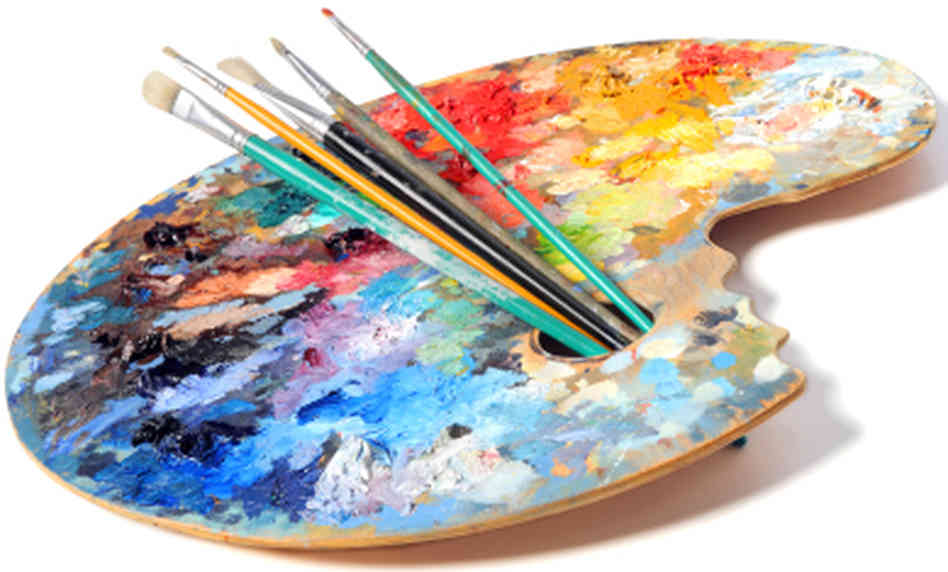Unveiling the Most Intriguing Trump Art Pieces of the Years
Unveiling the Most Intriguing Trump Art Pieces of the Years
Blog Article
Exploring the Diverse World of Artistic Expression: From Surrealism to Abstract Realistic Look
In the world of artistic expression, from the dreamlike landscapes of surrealism to the detailed play of light and type in abstract realism, artists have actually continuously pressed the borders of creative thinking and imagination. Each movement holds a special lens whereby the world is viewed and interpreted, providing a look right into the midsts of human emotion, understanding, and believed. As we explore the multifaceted globe of art, we exist with a tapestry of styles, strategies, and approaches that test our understanding and provoke consideration. The trip via these diverse types of imaginative expression promises to unravel a rich tapestry of aesthetic storytelling and intellectual query that astounds the mind and stirs the spirit.
Surrealism: Unleashing the Subconscious
Surrealism, an avant-garde imaginative motion of the 20th century, dug into the depths of the subconscious, unveiling a globe of dream-like imagery and unique juxtapositions. Spearheaded by musicians like Salvador Dali, René Magritte, and Joan Miró, Surrealism sought to challenge the traditional means of seeing and recognizing art. With techniques such as automatism and desire evaluation, Surrealist musicians intended to take advantage of the subconscious mind to reveal covert realities and desires.
One of the key components of Surrealism was the focus on the irrational and the remarkable. By integrating unexpected components in their works, Surrealist artists intended to produce a feeling of disorientation and shock in the viewer. This interruption of reasoning and reason was meant to prompt a deeper expedition of the subconscious and the secrets of the human psyche.
Abstract Realism: Redefining Assumption
Challenging standard imaginative borders, Abstract Realism redefines understanding with the blend of identifiable elements with abstract forms. This innovative approach to art combines the representational accuracy of realistic look with the creative flexibility of abstraction, supplying customers a special visual experience that prompts them to question their perception of fact.
In Abstract Realism, artists make every effort to catch the significance of their topics while additionally infusing their deal with a feeling of depth and intricacy with abstract aspects. By mixing the familiar with the unknown, these artists welcome target markets to engage with their items on numerous levels, encouraging them to discover the subtleties of appearance, type, and color.

Cubism: Fragmentising Reality
Using geometric kinds and fragmented point of views, Cubism transformed the imaginative depiction of fact in the very early 20th century. This approach not only deconstructed truth however also emphasized the flatness of the canvas, leading the method for future abstract art activities.

Cubism can be classified into 2 major phases: Analytical Cubism, characterized by single color plans and elaborate, fragmented types; and Synthetic Cubism, which integrated collection components and brighter colors into the compositions. Via these distinctive phases, Cubism influenced not only paint however also sculpture, style, and style. trump art. Its effect reverberated across the art world, motivating artists to discover new means of standing for the world and translating around them
Expressionism: Feelings on Canvas
Exploring the midsts of human emotions via meaningful and vibrant brushstrokes, Expressionism arised as a profound artistic motion in the early 20th century. Unlike previous art movements that concentrated on depicting the outside world, Expressionism dove right into the interior world of the artist's mind, aiming to evoke raw emotions and prompt visceral actions from visitors.
Expressionist artists, such as Edvard Munch, Egon Schiele, and Emil Nolde, denied typical concepts of this content charm and realism in favor of distorting type and shade to share subjective feelings. Making use of overstated brushwork, vibrant shades, and altered figures helped produce a feeling of anxiousness, alienation, or enthusiasm in their jobs.
One of one of the most renowned instances of Expressionism is Munch's "The Scream," which records the intense anxiety and anguish of modern-day life through its swirling, distorted figure versus a blood-red sky. Through their psychologically billed jobs, Expressionist artists sought to test traditional imaginative norms and provide a window right into the rough midsts of the human spirit.
Contemporary Art: Developing Viewpoints

One of the defining attributes of modern art is its consistent development and ability to adjust to transforming cultural landscapes. Musicians are increasingly integrating modern technology right into their technique, obscuring the lines in between the physical and digital worlds. This combination of mediums enables cutting-edge methods of storytelling and involving with target markets in a much more interactive manner.
Additionally, contemporary art often acts as a platform for social discourse, attending to pressing problems such as identity, national politics, and the environment. Musicians are using their job to provoke and trigger essential conversations thought, clarifying the intricacies of the globe we live in. As point of views remain to progress, modern art stays a influential and dynamic pressure in forming our social landscape.
Conclusion
In final thought, the globe of imaginative expression encompasses a vast array of styles and activities, each with its own special technique to you could try here communicating meaning and emotion. From surrealism's expedition of the subconscious to abstract realism's redefining of understanding, and from cubism's fragmentation of reality to expressionism's representation advice of feelings, art remains to evolve and challenge perspectives - trump art. Contemporary art mirrors the ever-changing globe we stay in, using brand-new means to interpret and recognize the complexities of our fact
As we explore the complex globe of art, we are offered with a tapestry of styles, strategies, and philosophies that test our understanding and prompt consideration. Its impact reverberated across the art globe, motivating musicians to check out new means of representing the globe and analyzing around them.

Report this page